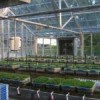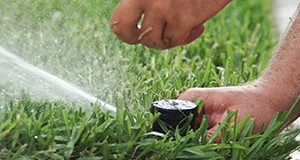
To help homeowners predict the impact of implementing some of the water conservation measures listed on Florida-Friendly Landscaping™ checklist, this 5-page fact sheet offers a table of estimated water savings. Homeowners can select activities which are the best fit for their landscape and can also see which have the most conservation potential. The water savings is compared to a baseline case of typical irrigation behavior. This 5-page fact sheet was written by Mackenzie Boyer and Michael Dukes, and published by the UF Department of Agricultural and Biological Engineering, August 2015. (Photo credit: Michael Gutierrez, UF/IFAS)
http://edis.ifas.ufl.edu/ae515
Tag: Lawns and Water Conservation
Encouraging Landscape Water-Conservation Behaviors #3: Developing Extension and Outreach Messages That Encourage Landscape Water Conservation Practice Adoption
Message framing can be an effective tool for crafting messages for a target audience. This 5-page fact sheet explains how Extension can use gain and loss message framing to encourage Florida residents who irrigate their home landscape to adopt water-conservation practices. Part three of the series Encouraging Landscape Water-Conservation Behaviors and written by Courtney Owens, Laura Warner, Joy Rumble, Alexa Lamm, and Randall Cantrell, and published by the UF Department of Agricultural Education and Communication, June 2015.
http://edis.ifas.ufl.edu/wc201
Encouraging Landscape Water-Conservation Behaviors #1: Tailoring Programs To Florida Residents Who Use Irrigation in the Home Landscape
To better promote water-conservation practices among homeowners who irrigate their landscaping, Extension professionals must first have a clear understanding of this target audience’s habits, beliefs, and needs. This 10-page fact sheet recommends that Extension professionals analyze their audiences through several factors, including their interest in water conservation and knowledge of water issues and laws. Written by Laura A. Warner, Emmett Martin, Alexa Lamm, Joy Rumble, and Randall Cantrell, and published by the UF Department of Agricultural Education and Communication, May 2015. http://edis.ifas.ufl.edu/wc199
Using Reclaimed Water to Irrigate Turfgrass: Lessons Learned from Research with Phosphorus
 Municipal wastes are treated at a wastewater treatment facility to produce biosolids and reclaimed water. Reclaimed water treated by filtration and chlorination is safe to use for designated purposes, such as residential landscape irrigation. Florida began using reclaimed water in 1966, and it is a leading state for using reclaimed water. Approximately 660 million gallons of reclaimed water are used every day in Florida, and the state encourages using reclaimed water as an alternative water source to reduce the pressure on potable water supplies. This 3-page fact sheet summarizes the results of a recent research project and provides research-based information for improving nutrient and water management with reclaimed water irrigation of turfgrass. Written by George Hochmuth, Jinghua Fan, Jason Kruse, and Jerry Sartain, and published by the UF Department of Soil and Water Science, October 2013.
Municipal wastes are treated at a wastewater treatment facility to produce biosolids and reclaimed water. Reclaimed water treated by filtration and chlorination is safe to use for designated purposes, such as residential landscape irrigation. Florida began using reclaimed water in 1966, and it is a leading state for using reclaimed water. Approximately 660 million gallons of reclaimed water are used every day in Florida, and the state encourages using reclaimed water as an alternative water source to reduce the pressure on potable water supplies. This 3-page fact sheet summarizes the results of a recent research project and provides research-based information for improving nutrient and water management with reclaimed water irrigation of turfgrass. Written by George Hochmuth, Jinghua Fan, Jason Kruse, and Jerry Sartain, and published by the UF Department of Soil and Water Science, October 2013.
http://edis.ifas.ufl.edu/ss592

